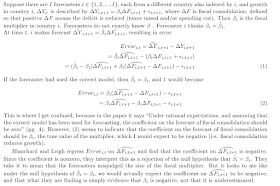in causing and managing bubbles. In particular, Governor Jeremy Stein expressed a desire for the Fed to use monetary policy to address "overheating." In a recent speech at NYU, James Bullard commented that Jeremy Stein "pushed back against the Bernanke doctrine."
"The Bernanke doctrine has been that we’re going to use monetary policy to deal with normal macroeconomic concerns, and then we’ll use regulatory policies to try to contain financial excess. And Jeremy Stein’s speech said, in effect, I’m not sure we’re always going to be able to take care of financial excess with the regulatory policy. And in a key line he said, raising interest rates is a way to get into all the corners of the financial markets that you might not be able to see, or you might not be able to attack with the regulatory approach. So I thought this was interesting. And I would certainly think that everybody should take heed of this. This is an argument that, maybe you should think about using interest rates to fight financial excess a little more than we have in the last few years.”Now, Scandinavian central bankers are chiming in. Danish central bank Governor Lars Rohde echoes the concern of Bullard and Stein. The role of monetary policy in Denmark is to maintain the fixed exchange rate. Thus, low interest rates in the world's largest economies have required correspondingly low rates in Denmark. The Danish deposit rate has been zero since July, and Rohde worries that this could fuel asset bubbles. In other words, he says that Fed-induced "overheating" is affecting smaller countries like Denmark.
Concern with the effects of monetary policy on financial stability are prevalent elsewhere in Scandinavia. The February minutes of the Swedish Riksbank, for example, also make frequent reference to financial stability concerns. For instance:
In Ms af Jochnick's opinion, developments in recent years have shown that central banks should have an overall perspective with regard to both monetary policy and financial stability, as financial stability is a necessary condition for monetary policy to function efficiently. This is also documented in research and analysis. What this means is the focus is on the inflation target and our independence, but that we thus cannot disregard the slightly longer run effects with regard to financial imbalances building up, for instance... Monetary policy is a blunt instrument when it comes to counteracting the build-up of financial bubbles, but financial imbalances can lead to major problems for companies and households and ultimately cause lower growth and higher unemployment. Just the fact that the Riksbank has talked about the risks entailed in the high level of household debt has contributed to stabilising the household debt ratio, albeit at a high level, according to Ms af Jochnick.As those comments make clear, one concern in particular is that low interest rates are contributing to a higher household debt ratio. This struck me as somewhat strange because household debt to GDP in the United States has been falling steadily despite our low interest rates (see FRED graph at bottom.) I wonder if she is correct that the Riksbank has actually managed to stabilize the household debt ratio just by talking about the risks of high levels of household debt! An article in Reuters says:
Swedish Riksbank Governor Stefan Ingves, who is also the head of the Basel Committee on Banking Supervision, has warned low rates are adding to the risk of driving up household debt.
In minutes of the bank’s Feb. 12 meeting, Ingves said, “With the current low interest rates, one must be aware of the link between household debt and monetary policy.”
The article neglects to mention some extremely important follow-up discussion by Deputy Governor Lars Svensson. In response to Ingves' concern that low interest rates could be driving up household debt, the minutes report that Deputy Governor Lars Svensson noted:
other means, means that have a significant effect. We should not use monetary policy to limit household indebtedness. This will only serve to run the economy into the ground." His opinion seems to have held sway, as the Executive Board decided to maintain the repo rate at one percent.
There seems to be a misunderstanding about what monetary policy can achieve with regard to household indebtedness. Extensive research and inquiries, as well as practical experience, have led to the conclusion that monetary policy has very little impact on household indebtedness in the short term and - with low and stable inflation -no effect in the long term. According to this research and the Riksbank's own inquiries, a policy rate that is raised by 1.5 percentage points in one step, is held at this higher level for a year and then gradually returns to its original level leads to a household debt ratio that is approximately 1.5 percentage points lower a couple of years ahead than would otherwise be the case. That is, a debt ratio of 175 per cent of disposable income would fall to just over 172 per cent.
Mr Svensson asked whether anyone believed that this would reduce the potential risks of household indebtedness and be worth more than the costs in the form of the lower rate of inflation and the higher rate of unemployment. Moreover, the thinking in Mr Ingves' article is based on the assumption that monetary policy can reduce indebtedness in the long term. But monetary policy has no long-term impact on indebtedness according to established research and science.Svensson's conclusion was that "The potential risks of household indebtedness have to be managed by
other means, means that have a significant effect. We should not use monetary policy to limit household indebtedness. This will only serve to run the economy into the ground." His opinion seems to have held sway, as the Executive Board decided to maintain the repo rate at one percent.


